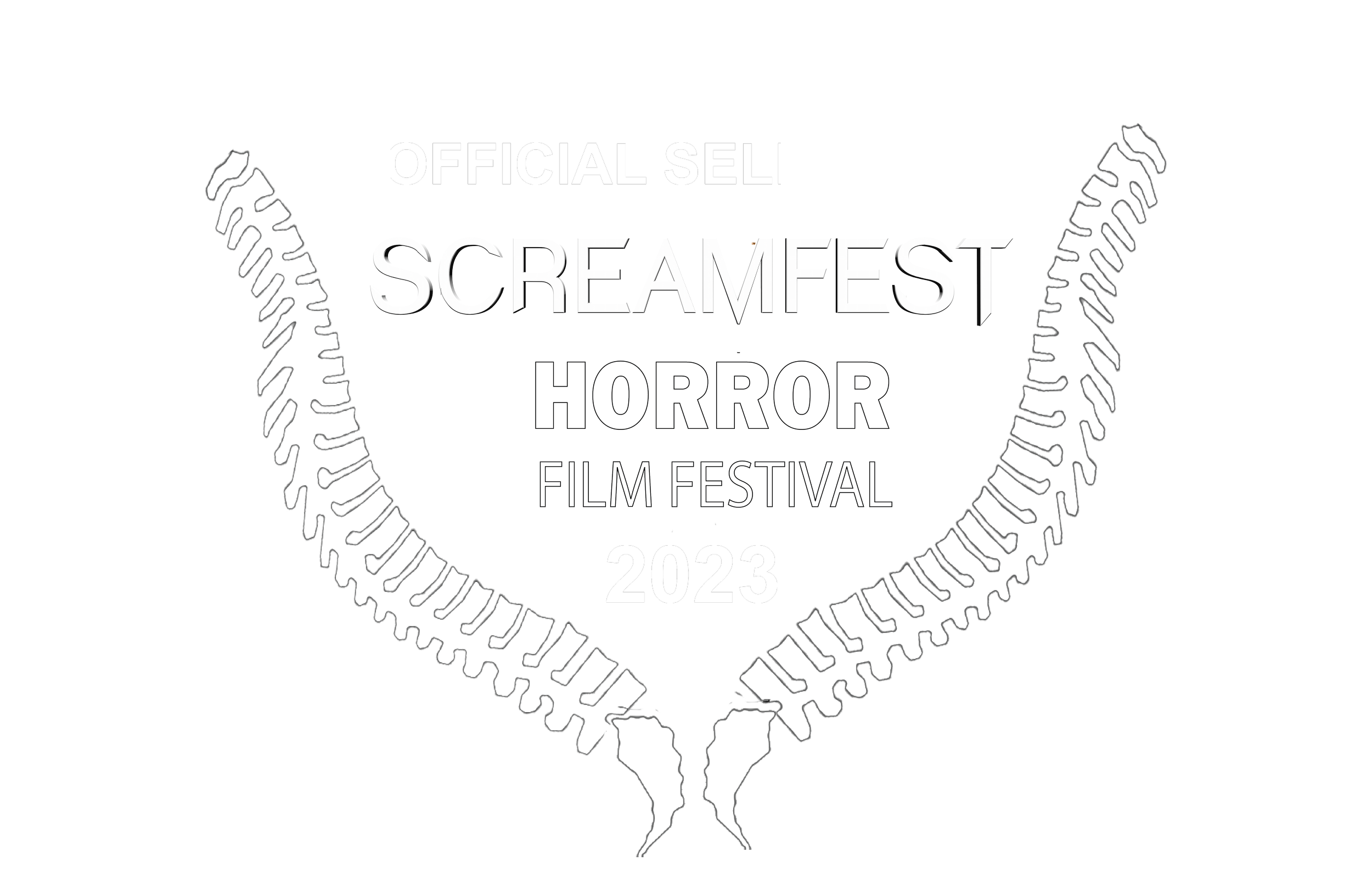
-
📽️ Trailer
📸 Stills
📃 Fact Sheet
👨👩👧👦 Credits
🧑🏻 Biography: Director
🧑🏻 Biography: Producer
👩🏻🦰 Biography: Lead Actor
👴🏻Biography: Antagonist
📢 Director’s Statement
❓Frequently Asked Questions // Director’s Q&A
1️⃣ FAQ 1: Why this story?
2️⃣ FAQ 2: Adaptation Challenges
3️⃣ FAQ 3: Casting Process
4️⃣ FAQ 4: The Characters
5️⃣ FAQ 5: Production Challenges
6️⃣ FAQ 6: Visual Style
7️⃣ FAQ7: Locations
8️⃣ FAQ 8: Location Challenges
9️⃣ FAQ 9: Audience Takeaway
🔟 FAQ 10: Future Career🗞️ Press
About
“Dissociation” is an Australian horror short film directed by Clayton Orgles, and produced by Aaron Vanderkley.
It is an adaptation of H.P. Lovecraft’s “The Picture In The House”
Logline
In a final bid to save her career, a desperate researcher ventures to a secluded house during a raging thunderstorm, where she stumbles upon an ancient man whose obsession with a mysterious book unleashes mind-bending horrors.
Synopsis
A Genealogist (Angela Leta Kaye) answers a phone call that could make or break her career: an overdue project on the history of a mysterious family, with a looming deadline. Fighting through a dangerous thunderstorm for any clues possible, she takes shelter in a decrepit house, where she encounters an Old Man (James Hagan) who recognises the family she is researching. As she mines him for information, he reveals to her secrets that will either guarantee her success, or her drag her to a horrific demise.
Selections
2023 - Official Selection Screamfest Horror Film Festival
2023 - Official Selection HP Lovecraft Film Festival (Portland, Oregon)
2023 - Official Selection HP Lovecraft Film Festival (Providence, Rode Island)
2023 - Official Selection HP Lovecraft Film Festivas (Mobile, Alabama)
2023 - Official Selection HP Lovecraft Film Festival (Online Event)
2023 - Official Selection Revelation Perth International Film Festival
2023 - Official Selection HorrorFest International Film Festival
2023 - Official Selection WA Made Film Festival
2023 - Official Selection Terror In The Bay Film Festival
2023 - Winner “Best Atmosphere” at Terror in The Bay Film Festival
2023 - Official Selection Perth Horror Film Festival
2023 - Winner “Best WA Horror Short” at Perth Horror Film Festival
2023 - Semi-Finalist Australia Independent Film Festival
2023 - Honourable Mention WA Screen Culture Awards
Stills
Fact Sheet
Title: Dissociation
Genre: Psychological Horror
Medium: Short Film
Runtime: 20 minutes
Country: Australia
Year of Production: 2020, 2022
Aspect Ratio: 16:9
Frame Rate: 25 fps
Dynamic Range: HDR 2000 Nits
Sound Format: 5.1
Language/Subtitles: English
Production Locations:
Perth, WA, AU
Toodyay, WA, AU
Pinjarra, WA, AU
Cast
The Victim & The Genealogist
Angela Leta Kaye
The Old Man
James Hagan
The Young Man
Maximiliano Laffont
Crew
Director / Cinematographer / Editor
Clayton Orgles
Producer / 1st AD
Aaron Vanderkley
Production Designer
Nina Gee
Composer
Joe Louis Robinson
Gaffer / Camera Assistant
Blake Thomson
Elliott Nieves
Production Sound
Luke Moore
Hair & Makeup
Melissa Clarkson
Production Assistants
Steven Clarke
Jed Cowper
Aaron Chappell
Screenings
📍 Streaming, Worldwide
📅 17 May 2024 - Present
📽️ Screamfest LA - Youtube
🟢 Watch Now
-
📍 Streaming, Wordwide
📅 2 - 5 Dec 2023
📽️ H.P. Lovecraft Film Festival📍 Mobile, AL, USA
📅 4 Nov 2023
📽️ H.P. Lovecraft Film Festival📍 Thunder Bay, ON, CA
📅 21 Oct 2023
📽️ Terror In The Bay Film Festival
✨ Canadian Premiere📍 St. George, UT, USA
📅 19 Oct 2023
📽️ HorrorFest International Film Festival📍 Los Angeles, CA, USA
📅 14 Oct 2023
📽️ Screamfest Horror Film Festival📍 Portland, OR, USA
📅 8 Oct 2023
📽️ H.P. Lovecraft Film Festival📍 Providence, RI, USA
📅 20 Aug 2023
📽️ H.P. Lovecraft Film Festival
✨ USA Premiere📍 Perth, WA, AU
📅 18 Aug 2023
📽️ Perth Horror Film Festival📍 Perth, WA, AU
📅 16 Jul 2023
📽️ Revelation Perth International Film Festival📍 Perth, WA, AU
📅 25 Feb 2023
📽️ WA Made Film Festival
✨ World Premiere
Biographies
Director | Clayton Orgles
Clayton Orgles is an Australian director with a focus on psychological horror films.
Clayton began his career in 2013 by directing music videos, quickly gaining a reputation for his visual storytelling, emotional resonance, and attention to production detail. This led to collaborations with a spectrum of international artists and record labels, providing him with the experience to navigate diverse narrative demands and challenging budget constraints.
Many of his projects, including the popular videos for Black Tongue's "Second Death" and Saviour's "Younger" have attracted hundreds of thousands to millions of views online, underscoring the global impact of his work.
In 2018, Clayton made his film debut with the short psychological drama "Disenthrall," about a game developer whose grief pushes her into a downward spiral where virtual reality blurs with the real world.
This was followed by "Dissociation" in 2023, an adaptation of H.P. Lovecraft's "The Picture in the House," which played at festivals including Screamfest LA, H.P. Lovecraft Film Festival, and Revelation Perth.
That same year, Clayton ventured into animation with "Dislocate", earning a spot as a Best Animation Finalist at CinefestOz.
His recent work includes the dark comedy "Disconnect," which won an Audience Choice for Best Short Film at the WA Made Film Festival in 2024. The film explores a young couple's encounter with a relic that grants social media followers in exchange for self-inflicted pain.
As Clayton continues to refine his craft, he remains committed to expanding his directorial scope and bringing innovative, psychological horror to audiences worldwide.
Producer | Aaron Vanderkley
Aaron Vanderkley is a talented and acclaimed producer who graduated from Murdoch University with a Bachelor of Media (Screen Production).
As a versatile and skilled filmmaker, Aaron has been working as a freelancer across Western Australia for over 10 years, delivering exceptional and high-quality content to a diverse range of clients.
He is recognized for his imaginative and captivating Star Trek fan film series, "These Are The Voyages," which has garnered hundreds of thousands of views globally and won numerous international awards.
With his passion for filmmaking and expertise in the industry, Aaron is dedicated to creating projects that are both cutting-edge and captivating, with the goal of entertaining and satisfying large audiences.
Lead Actor | Angela Leta Kaye
As the Victim & the Genealogist
With a background in performance and creative writing, Angela Leta Kaye is a talented and versatile performer who has taken the stage by storm since she first wrote and performed a monologue at just sixteen years old.
She holds a BA in Performance Studies and Creative Writing with Honours in Performance Studies, and has honed her skills through a diverse range of theatrical productions, including classics such as Hedda Gabler and The Importance of Being Earnest, as well as original works like Reg Cribb's Broken Valley and physical theatre pieces like Breathless and SkyClimb.
When she's not performing, Angela is involved in a variety of film and media projects as an actor, writer, and director, and her creative talents extend to martial arts, dance, language, and even balloon twisting.
Lead Actor | James Hagan
As the Old Man
James Hagan (2 February 1954—14 July 2021) was a dynamic and accomplished actor of stage and screen, and a highly revered and sought-after teacher of voice.
Throughout his extensive career, he amassed numerous accolades and awards, showcasing his versatility and mastery of his craft. He began his career at the Perth Playhouse in 1975 and after touring Britain and Europe with the acclaimed Australian theatre company Triad Stage Alliance, he worked with the English-speaking theatres of Frankfurt, Germany and Florence, Italy. Upon his return to Australia in 1985, James worked tirelessly in theatre, film, and radio, performing in over forty theatre productions alone.
James was in high demand as a voice and drama teacher, coaching actors, announcers, and business people, and was a speech and drama coach for numerous performing arts organizations and acting workshops in Sydney and Perth.
Director’s Statement
As the director of "Dissociation," my passion for bringing HP Lovecraft's "The Picture in the House" to life on the screen was driven by my love for psychological horror stories. The eerie atmosphere and hidden horror of the story captivated me, but I also knew that to effectively adapt it for the screen, changes needed to be made in terms of character development and the exploration of deeper themes.
To achieve this, I chose to explore a new theme specific to the film. I began by considering why the character of the Genealogist, played by Angela Leta Kaye, would be caught in a remote area during a thunderstorm. This led me to the theme of personal responsibility and its impact on our lives. The theme is demonstrated through the Genealogist's actions, including her delay in finishing her research assignment and her poor choice of clothing for the weather conditions.
Furthermore, I deepened the portrayal of the Old Man, played by the late James Hagan, to resonate with the film’s overarching theme of personal responsibility. By exploring his past actions and their consequences, the film reveals how he has come to live in isolation, hinting at a life shaped by crucial, perhaps regrettable, decisions.
These explorations aims to evoke empathy from the audience and prompt reflection on how the choices we make can irrevocably shape our lives, blurring the lines between victim and antagonist.
Overall, my goal was to adapt Lovecraft's story and create a film that not only entertains and thrills audiences but also makes them think about the deeper themes and ideas presented. With these changes, I believe "Dissociation" is a film that is both intellectually stimulating and emotionally impactful.
Frequently Asked Questions // Director Q&A
1. What drew you to the story of this particular film and made you want to bring it to life?
As the director of Dissociation, I was drawn to HP Lovecraft's story "The Picture in the House" because of its powerful and unsettling horror elements. The central question of whether the protagonist is seeking terror where there is none or has uncovered something truly sinister is what really grabbed my attention and inspired me to bring this story to life. I saw the potential for what could be an immersive, unique, and thought-provoking experience on the big screen, which could also present horror fans with something they don't often see in the genre.
2. What were some of the challenges you faced in adapting the original source material?
Adapting the original source material came with challenges, particularly because Lovecraft drives the story using a journalistic style, which includes not only dialogue and action, but also the protagonist’s internal thoughts that contextualise the story. Simply translating what is seen and heard would result in the horror becoming unclear, leading to a less impactful viewing experience; similarly, we couldn’t use the internal monologue as a voice over, because it’s a literary device that doesn’t translate well to film. Balancing faithfulness to the original intent without relying on the internal monologue, was the biggest challenge I faced when adapting the material, and I spent a great deal of time tweaking the screenplay to ensure the core story element came across clearly.
One example is how Lovecraft hinted at the age of the Old Man in “The Picture In The House”: he did so by having the Old Man mention obtaining a book from an obscure sea captain, which is explained by the protagonist as having lived before the American Revolution. In “Dissociation” we changed this sea captain to Breaker Morant, that we would be using an actual historic figure as a pin for viewers to understand the age of the Old Man without the monologue to contextualise it. Our film has a few little detail changes like this, which were solutions to the adaptation problem.
3. What was your casting process and what traits did you look for in actors?
When casting for "Dissociation," I included prompts in the audition scripts that reflected my vision for each character. For instance, I wanted the Old Man to seek approval from the Genealogist, as if he had been lonely for many years, and I wanted the Genealogist to seek a parental figure to take responsibility, as if she had lived a sheltered life. Seeing the interpretation of these prompts were essential for me in casting, because they allowed me to understand how the actor’s work would contribute to the theme of personal responsibility within the film. When we received their tapes, the standout performances of James Hagan and Angela Leta Kaye far exceeded our expectations and truly brought the characters to life.
4. How did James Hagan approach his role in the film?
James Hagan approached his role of the Old Man with great care and attention to detail. He was very focused on understanding his character's backstory and motivations, which helped to bring a sense of depth and authenticity to his performance. To help illustrate his understanding of the character, James jokingly described him as ‘one of those guys who is secretly really into porn’, which I thought was both hilarious and revealing of James’ light-hearted nature.
Angela, who played the Genealogist in the film, similarly had a strong grasp of her character's personality, and described her as someone who ‘over-commits on group assignments, but never follows through’. James and Angela collectively helped to bring a rich subtext to the film, which added an additional touch of authenticity to the story.
5. What was the biggest challenge you faced during the production process and how did you overcome it?
As the director of "Dissociation," the biggest challenge I faced during the production process was the need to balance shooting speed and audience immersion. I have a background in narrative music videos, which are often shot very quickly, which caused me to struggled with the slower pace required for shooting a narrative film. In particular, the addition of sound was a new and significant challenge, as shots and scenes needed to be held for longer to create a captivating experience.
Despite these initial challenges, I was able to overcome this obstacle by adjusting my expectations and processes throughout the shoot, by reducing the number of shots and setups in the schedule so we could get what we need. My ultimate goal was always to deliver the best possible viewing experience, and I believe that the final product reflects my commitment to that goal.
6. Can you discuss your process for creating the film's visual style?
In creating the visual style for "Dissociation," I sought to strike a balance between honouring the original story and bringing a fresh take to the material. I placed a particular emphasis on accurately reproducing Filippo Pigafetta's "Regnum Congo," which provided the namesake for Lovecraft's "The Picture in the House." To achieve this, I worked closely with Production Designer Nina Gee, who utilised actual images from the real-life book to create our version of the "Regnum Congo" for the film. I also made sure to retain the thunderstorm setting and antique furnishings, which both contribute to the creepy atmosphere of the story.
To add our own fresh touch to the material, we also wanted to create a contrast between the two main characters, the Genealogist and the Old Man, through their costumes and personal styles. I asked Nina to give the Genealogist a pop of colour with a flashy rainbow puffer jacket, while keeping the Old Man in more subdued rusty browns. This was meant to highlight the Genealogist's fast-paced, contemporary background and the Old Man's extreme age and deterioration. By playing with these contrasting visuals, we aimed to create visual tension between the two characters and enhance the overall dramatic experience.
7. How did the locations play a role in shaping the feel of the film?
The locations played a crucial role in shaping the look and feel of "Dissociation." In Lovecraft's "The Picture in the House," the horror stems from the accidental discovery of someone who has been isolated from society due to their extreme views; thus, it was important to find a remote location that would reflect the derelict state of the Old Man's psyche. I was inspired by Lovecraft's description of the house as situated on a "damp, grassy slope" in the original story; this part of his description reminded me of my hometown of Toodyay in Western Australia's Wheatbelt Region, which has rolling hills that I felt would perfectly emphasise the isolation of the house. I decided to shoot the film's exterior scenes in Toodyay to bring this vision to life.
8. Can you tell us about any unique or interesting challenges you faced while searching for locations?
Finding the perfect location for the old rundown house in "Dissociation" was a challenging task. We faced several obstacles along the way, including an instance where we found an ideal location, but were unable to reach an agreement to secure it. We even considered filming at an old house in the city and cropping out the environment, but that solution was not feasible because it was important to show the house in its full context on the hill, in order for the horror to hit home.
In the end, we had to use three different locations, which we blended together through various creative techniques. The grassy hills were in Toodyay, the house exteriors were at Fairbridge Village in Pinjarra, and the house interiors were at Mattie Furphy House in Swanbourne. Despite these challenges, we were able to create a seamless and convincing environment for the film; my producer, Aaron Vanderkley, even exclaimed during a viewing of the film ‘She's actually there! I can't believe it’. This reaction from someone who is familiar with the production process gave me confidence that we've created an immersive experience for the audience.
9. What do you hope audiences take away from the film, and how do you think it will be received by fans of the original story?
As the director of "Dissociation," I aimed to craft a film that was not just a straight adaptation of the source material, but also bought something new to the table. I believe fans of the original "The Picture in the House," will appreciate the fresh take we've taken on the tale, while still staying true to its classic roots. I also hope that due to the changes we’ve made, the story will be enjoyed by those who haven’t read Lovecraft’s original story, creating a gateway to his masterful writing.
10. What are your future plans for your filmmaking career and what kind of projects would you like to tackle in the future?
As a filmmaker, I’m drawn to the horror genre for its ability to captivate and bring audiences together through the power of suspense and atmosphere. In the next five years, I aim to produce my first feature-length film, where I will perform a deep dive into the psychological horror genre. I’m confident in my ability to deliver gripping and unforgettable horror experiences for audiences to enjoy, and I’m very excited to show you what I’m working on next!
Press
H.P. Lovecraft Film Festival Q&A
Interview with Director Clayton Orgles
The Curb Podcast
Interview with Director Clayton Orgles































